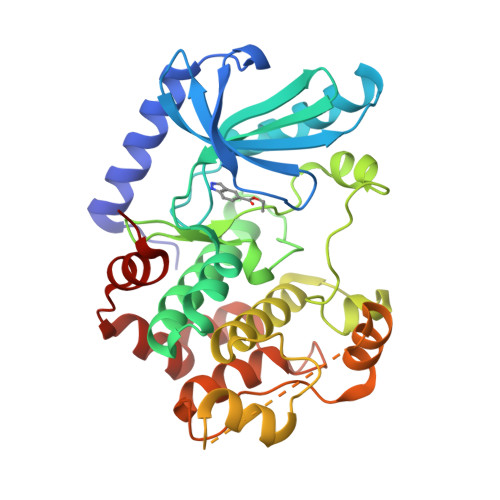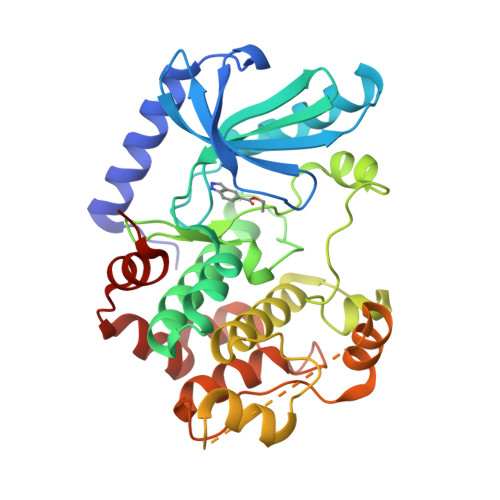An Automated Microscale Thermophoresis Screening Approach for Fragment-Based Lead Discovery.
Linke, P., Amaning, K., Maschberger, M., Vallee, F., Steier, V., Baaske, P., Duhr, S., Breitsprecher, D., Rak, A.(2016) J Biomol Screen 21: 414-421
- PubMed: 26637553
- DOI: https://doi.org/10.1177/1087057115618347
- Primary Citation of Related Structures:
5BX0 - PubMed Abstract:
Fragment-based lead discovery has proved to be an effective alternative to high-throughput screenings in identifying chemical matter that can be developed into robust lead compounds. The search for optimal combinations of biophysical techniques that can correctly and efficiently identify and quantify binding can be challenging due to the physicochemical properties of fragments. In order to minimize the time and costs of screening, optimal combinations of biophysical techniques with maximal information content, sensitivity, and robustness are needed. Here we describe an approach utilizing automated microscale thermophoresis (MST) affinity screening to identify fragments active against MEK1 kinase. MST identified multiple hits that were confirmed by X-ray crystallography but not detected by orthogonal methods. Furthermore, MST also provided information about ligand-induced aggregation and protein denaturation. The technique delivered a large number of binders while reducing experimentation time and sample consumption, demonstrating the potential of MST to execute and maximize the efficacy of fragment screening campaigns.
Organizational Affiliation:
NanoTemper Technologies GmbH, Munich, Germany.



















